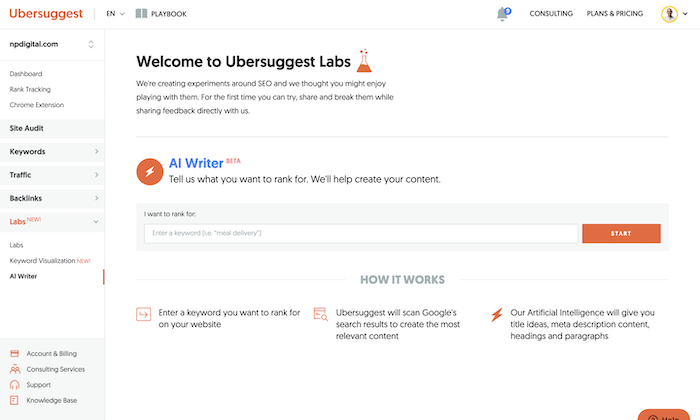Digital PR: The Beginner’s Guide to Making Your Brand Unmissable
The best part? Digital PR and SEO go together like peanut butter and jelly. Digital PR is not only beneficial to your website in its own right, but it can also seriously boost your SEO efforts and is the...

Public relations has always been a critical factor in building a brand, and it is no different in today’s digital society. Times have simply moved from billboards and press comments outside office buildings to creative digital campaigns and quotes in key online publications. The best part? Digital PR and SEO go together like peanut butter and jelly. Digital PR is not only beneficial to your website in its own right, but it can also seriously boost your SEO efforts and is the truest form of “white hat” link building. As someone who specializes in using digital PR for SEO, I am going to deep dive into digital PR and its many benefits, as well as give you some of my top tips on where to start and how to get the most success from your efforts. But first, let’s look at what digital PR is and why it is important. Digital PR is a promotional tactic used by marketing professionals and PR specialists. When done properly, it utilizes traditional public relations tactics in a digital space—most often to boost the awareness of a brand, company, or business. The whole point of digital PR is to stay ahead of the curve and make your brand unmissable. Just like any other form of marketing, digital PR should have its own strategy based on the individual requirements and goals of the brand or business. The strategy combines a number of techniques, such as promoting content, stories, or data, to deliver results that benefit the overall marketing strategy. Digital PR has a huge number of benefits in addition to improving brand awareness, including boosting organic traffic, leads, and sales, as well as promoting social engagement. Digital PR is often thought of as a form of link building. However, it is a beast of its own, and the two should not be confused. Digital PR should be done alongside SEO. Even Google’s own John Mueller said previously that it is often even more important than technical SEO. I love some of the things I see from digital pr, it’s a shame it often gets bucketed with the spammy kind of link building. It’s just as critical as tech SEO, probably more so in many cases. Although digital PR is not an SEO tactic, it does complement our efforts as SEOs by improving the expertise, authoritativeness, and trustworthiness (E-A-T) of the brand and those behind it, as well as creating high-quality, super-authority backlinks. The fact is no matter what paid and organic marketing channels you focus on, digital PR should always be part of your marketing strategy, regardless of the size of your business. So if you’re new to digital PR, you’re probably wondering why you should invest your time and money into a digital PR strategy and what the point is exactly? Well, let’s break it down and look at some of the main reasons people want to utilize digital PR tactics for their business: Media coverage for brands has always been one of the main goals for public relations, regardless of whether it is in a digital or traditional sense. A third-party endorsement for your business, especially from a highly authoritative media outlet, is the best possible advertisement for your company. Your brand and those behind it are presented as experts in the field. This builds instant trust with your audience and potential customers. If you’re the new kid on the block and your business is just getting started, create an online presence that lets your target audience know who you are, what you’re about, and your values. This gets your name in front of your target audience in the way you want to be viewed. Doing so in a way that is newsworthy is best for making a lasting impression. But it’s not just about making a name for yourself at the beginning of your business. Even established brands look for new and exciting ways to get in front of their ideal audience to maintain brand awareness and stop their competition from getting the edge. Unlike the days of traditional print media, a digital journalist never always reveals their source. That means mentioning your brand and often quoting the key experts at the forefront of your business. Now, pitching journalists regularly (daily in my case) is considered by many to be a long-winded, tedious process. However, this is simply the first step in building relationships with journalists—the value of which should never be underestimated. As someone who has been using digital PR to boost the SEO efforts for clients over the years, I have built ongoing relationships with hundreds of journalists. To date, I have a personal database of thousands of U.S.- and U.K.-based journalists for all major publications. That means, these days, I can contact journalists directly for campaigns and press releases I am running for my clients. I also have a large number of journalists who come to me (or my clients) directly for quotes that require topic experts. Whenever they are writing an article relevant to my experience, they will reach out to me to see if I can provide a quote. Initially, pitching journalists is definitely hard work. But in the long run, you can build ongoing, long-term relationships. It’s definitely worth it when journalists come to you and are continuously publishing your brand on high-authority websites. Although the main goal of public relations is always to build your brand, the secondary benefits digital PR lends to SEO are undeniable. We will discuss each of these and why they matter in more detail later, but the most obvious are links, links, and more links. But not just any links. Not a random link thrown into a guest post that no one will ever see or care about. I’m talking about links that actually get clicks, drive traffic to a piece of content or asset, encourage engagement and shares, and boost branded search. Pages with more backlinks often appear higher in search results. A page’s Google search traffic is strongly and positively correlated with the number of websites that link to it, according to our analysis of 1 billion pages: Plus, if you want to put the “expert” in expertise, authority, and trust, there’s nothing more effective than being quoted across high-authority websites as a go-to topic specialist. OK, now we know the point of public relations. So let’s talk about what you’ll get out of it: In all my years working with clients as an SEO, I found getting more qualified leads and sales is always on their list of KPIs—no matter what other goals they may have. The great thing about digital PR is that it gets your brand in front of the right people at the right time. A well-coordinated campaign can ensure your new product, a seasonal sale, or a special offer is seen by your ideal customers and promote a huge influx of highly relevant, qualified leads. Recommendation The key here is relevance. Most people get confused about niche or topic relevance and think of it in the same way as traditional link building. Building links for SEO on niche relevant sites can help improve topic relevance so Google has a better understanding of what your website is about. But in digital PR, relevance means getting your business, product, or service in front of a relevant audience. For example, if you have a B2B cybersecurity business, you don’t want any old mention on Cybersecurity Weekly. Rather, you want to be featured in content that CEOs and founders are likely to read, such as Harvard Business Review, Forbes, and Entrepreneur. One of the major benefits of digital PR (certainly as an SEO) is building links to highly authoritative websites that you simply can’t achieve with other forms of link building. Over the years, I have acquired a magnitude of links for clients across sites like Forbes, The New York Times, The Telegraph, BuzzFeed, and so on. These links can not only significantly improve the authority of your site within your given niche in the eyes of search engines, but they can also make your brand stand out from the competition. If someone searches for your company name, everyone expects the top result to be your website. But not everyone can follow that with positions #2, #3, and #4 as features on sites like those listed above. As mentioned above, the links acquired from digital PR are more difficult to replicate with traditional link building methods. Plus, features are always completely unique. Sure, your competitors can also do some digital PR. But it is not guaranteed that the same sites will be working on relevant features to acquire links or that they will even be picked up by the journalists. That means even if a major competitor is continuously checking your backlink profile to attempt to loot your backlinks, it’s not as simple as putting a guest post on the same website. Let’s face it. Anyone can tell you how fantastic they are. A well-written About page or a self-promoting YouTube video may gain you some trust as an authority in your industry. But an endorsement from an authoritative publication? Priceless. Nothing speaks louder to a potential customer than a leading industry authority presenting you as an expert. This builds instant trust between you (seen as a specialist in your field) and people who are directly interested in what you have to offer. As someone who has worked with niche sites for a long time, I’m often asked to comment on topics like flipping websites—such as this one recently published on affilimate.com: If you regularly provide journalists with well-written and actionable quotes, chances are they will add you as a regular source. Recommendation Always share any articles your quotes are published in across social media, especially LinkedIn and Twitter. Journalists have KPIs on engagement and shares, and sources who make the effort on socials tend to get used again. With links acquired by traditional link building methods, the goal is to develop trust signals from authoritative, niche-relevant sites that will tell Google your website is an authority in the niche and give search engines a better understanding of your site’s content. The thing is that those links don’t always tell your audience you are an authority and, often, have no real value to the user. When you’re promoting yourself and your brand as an authority to your potential customers using digital PR methods, links will be used to direct the user to a highly relevant, engaging resource. For example, a story that goes viral about a groundbreaking study your company has conducted may contain a link that directs readers to the results. These links drive traffic, social shares, and engagement. Now, I’m a huge advocate of digital PR and how it can support SEO. But it’s not all sunshine and rainbows. So let’s take a look at some of the downsides: Due to the nature of public relations, it is a highly competitive arena. Some of the more popular tactics—such as earned media, where you pitch journalists your thoughts as an industry expert—happen quickly. And there are thousands of other people waiting to jump on the opportunity. Journalists can post their queries across different platforms in the afternoon and want all submissions by the end of the working day. That means you have to be hot off the blocks (as well as provide something high-quality and unique) to beat the competition. In the last six months alone, I have seen enormous changes within the digital PR space, especially as someone who specifically uses PR to boost SEO. Tactics that were highly successful before no longer work, and platforms that were once a goldmine of opportunities are over-saturated and offer results few and far between. Now, if you’re an SEO, you’re used to being on your toes. I mean, who knows what kind of curveball Google can throw at any time with a surprise algorithm update? But for those not used to working in such a fast-paced environment, such as a small-business owner, it can be difficult to stay on top of what the best plan of action is to actually get results. Speaking of results, here’s the thing with digital PR: They’re never guaranteed! Mainly due to the two reasons above. You can pitch 20 journalists and just not hit the nail on the head. Or you come up with a great campaign idea, conduct an in-depth study, and create assets around the results; then, a competitor releases something near-similar the day before publishing (yes, I’ve had that happen). Also, if you don’t have the best strategy or it simply isn’t well executed, the likelihood is that you won’t get picked up by journalists or you won’t get the response from your target audience. So now that we’ve talked about what digital PR is, as well as the pros and cons, let’s take a look at some of my favorite digital PR tactics: Reactive PR (also called earned media) is a method where a journalist will post a query for an article they are writing, requiring subject matter experts to give comments that they can use as an authority source. This method works incredibly well for businesses of all sizes and helps to build E-A-T and high-authority links. There are a few different platforms and methods used for reactive PR, depending on the kinds of sites you want to target (niches, geography, etc.). All you need to do is visit the website and register as a source, and queries will come directly to your inbox. Some of these include: HARO – Help a Reporter Out is a popular platform for earned media. It’s a great option for beginners and mainly focuses on high-quality publications in the U.S. The one issue with HARO is, these days, it is incredibly saturated, so you have to be quick to get featured. Terkel – Terkel is a great alternative to HARO that provides queries for high-authority media outlets in both the U.S. and U.K. Again, it is a great option for beginners looking to do their own PR and, as a newer platform, is continuously expanding with opportunities. SourceBottle – If you’re a new business specifically looking for publications in Australia, SourceBottle is a great platform to get started with. Paid platforms – The above options are all free and a great starting place for beginners. However, these days, more experienced PR pros will stay away from these platforms when working on accounts for clients. They may opt for paid platforms instead. Some examples of paid platforms include Muck Rack, Prowly, JournoLink, and JustReachOut. Recommendation When specifically using this tactic for SEO, don’t waste time pitching queries that are for sites you don’t want links from. Use Ahrefs’ Site Explorer to vet publications before pitching. If you’re hoping for an SEO boost, you can quickly check the Domain Rating (DR) score and traffic of a site. Plus, always look at its backlink profile to make sure nothing seems untoward. Avoid any site that has a backlink profile full of spam links or appears to be part of a public blog network (PBN). The key to success with reactive PR is to write unique and actionable pitches for journalists. Give them something that your competitors won’t have an insight into and make sure it is well written. Journalists want to directly copy and paste, so make their job as easy as possible! Recommended reading: How to Build Backlinks and Get Press Using HARO [Case Study] Journalists love data. Fact. Conducted some groundbreaking research? Got some fun and quirky statistics? Journalists love to feature that stuff. The idea with these campaigns is to come up with an idea around something newsworthy that you can gather comprehensive data on and then proactively approach journalists with the story. I recently created a campaign for a client in the HR industry about lying on your CV for remote positions. We conducted a study in the U.K., and it turns out that over one-third of jobseekers were lying to get remote positions. We created an in-depth piece of content detailing the full results on the client’s website, along with a long-form infographic with the key data points. It was then picked up by hundreds of media outlets, including MSN and Yahoo: Just won an award? A new company merged? If you have a newsworthy story, a press release is a great way to get traction, create brand awareness, and amplify your position as an authority in your industry. Here’s an example of a press release we distributed earlier this year about major keyword updates: There is a formula for success when it comes to writing press releases, though. To get picked up, they need to be written and formatted correctly. To learn more about how to do it, you can read this great guide from our Rebecca Liew. We’ve established that journalists love data, but that doesn’t mean all campaigns have to be data-led to pick up traction. Big brands are finding more and more success with creative campaigns that include bold visuals or creative stunts (think the digital version of a flash mob) to capture attention and go viral. A fantastic example is Taylor & Hart’s diamond Haribo ring campaign, created by creative PR agency Rise at Seven: This campaign tugged at the nation’s heartstrings, driving 8,500 people to its landing page and picking up almost 40 qualified leads… for a £25,000 ring! For this tactic to be successful, you have to be hot off the presses. Newsjacking is all about monitoring news stories as they break and jumping on them with comments and thought leadership pieces. It is an always-on technique that is used by PR professionals to put brands at the center of a trending topic. Most people who do newsjacking successfully have teams of people monitoring the news daily for stories to jump on. For a beginner, an easy way to get started is to set up Google Alerts to notify you of specific topics. That way, you can be quick to respond with expert commentary. Recommended reading: 9 Great Public Relations Tactics With Campaign Examples Digital PR is one of the most effective ways of establishing your brand and those behind it as an authority in your space. Also, it works in tandem with SEO to boost your link building efforts. Is it time to start using digital PR to make your brand unmissable? As always, if you have any questions, feel free to ping me on Twitter.Bigger and better brand coverage
Building awareness and shaping brand image
Forming long-term relationships with journalists
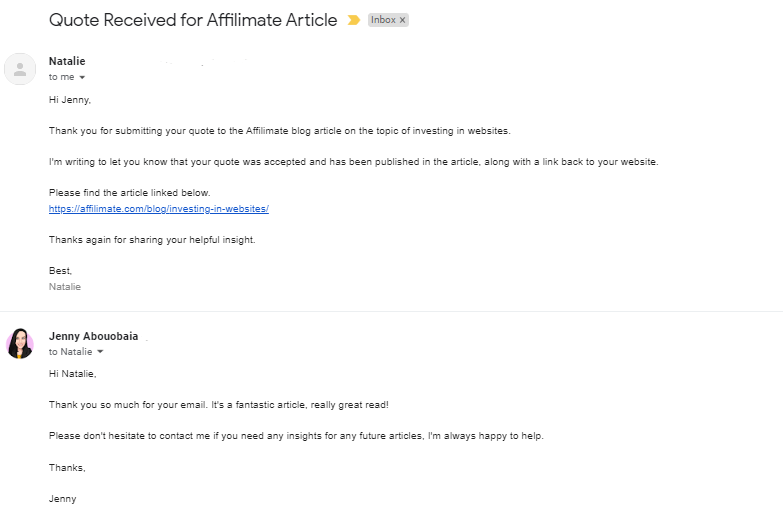
Boosting SEO efforts

More sales and leads
Build authority with links from top-tier publications
Build links that competitors can’t replicate to get ahead of the competition
Gain trust as an industry expert
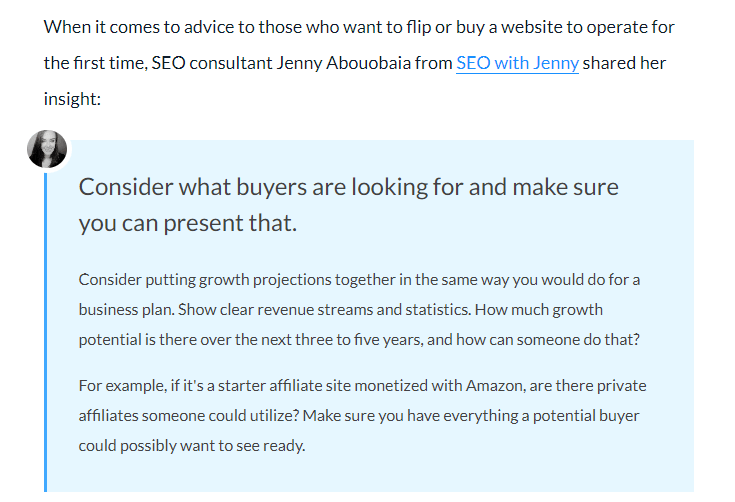
Earn links that drive referral traffic
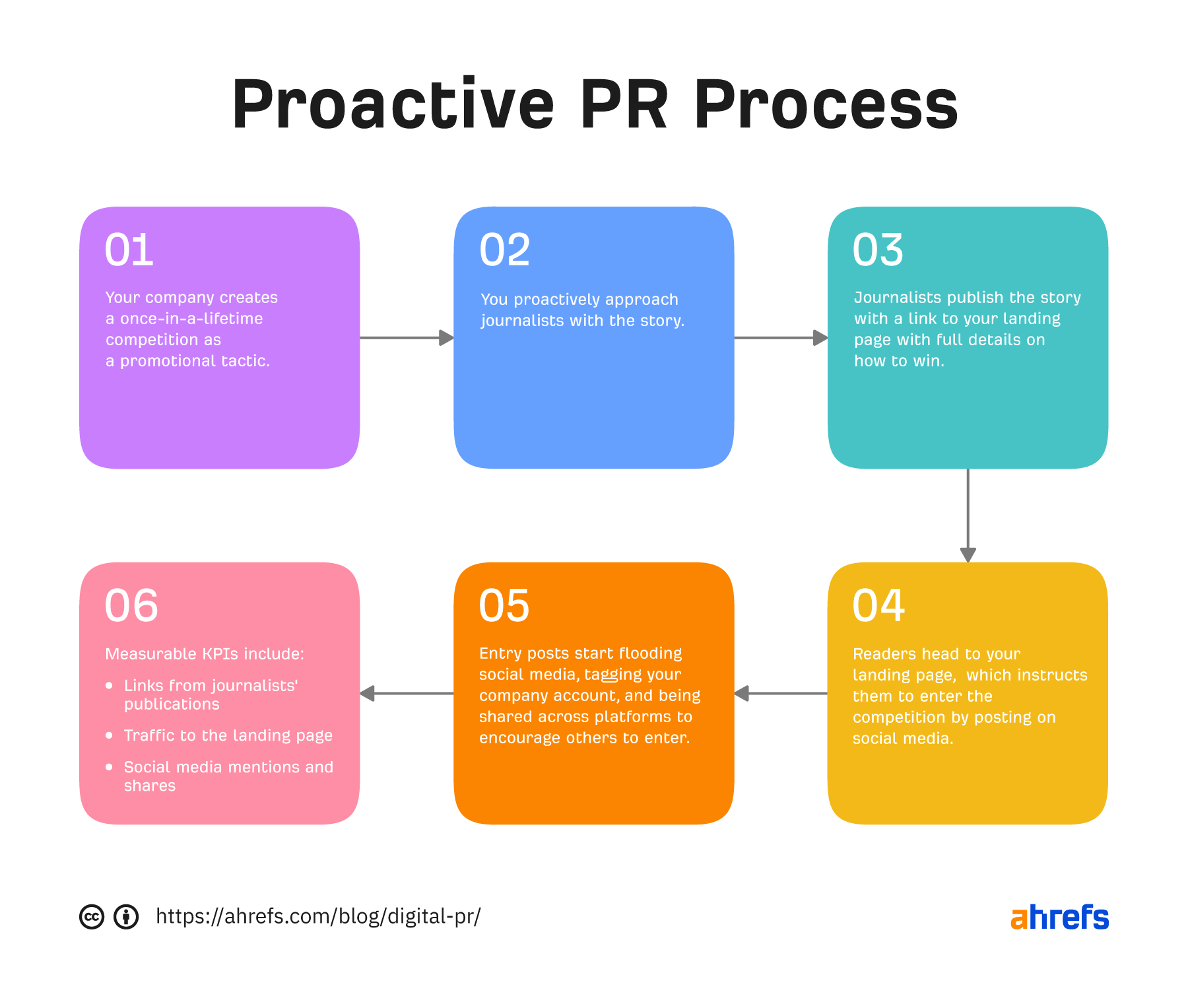
Highly competitive
Ever-changing
Results are not guaranteed
1. Reactive PR (earned media)

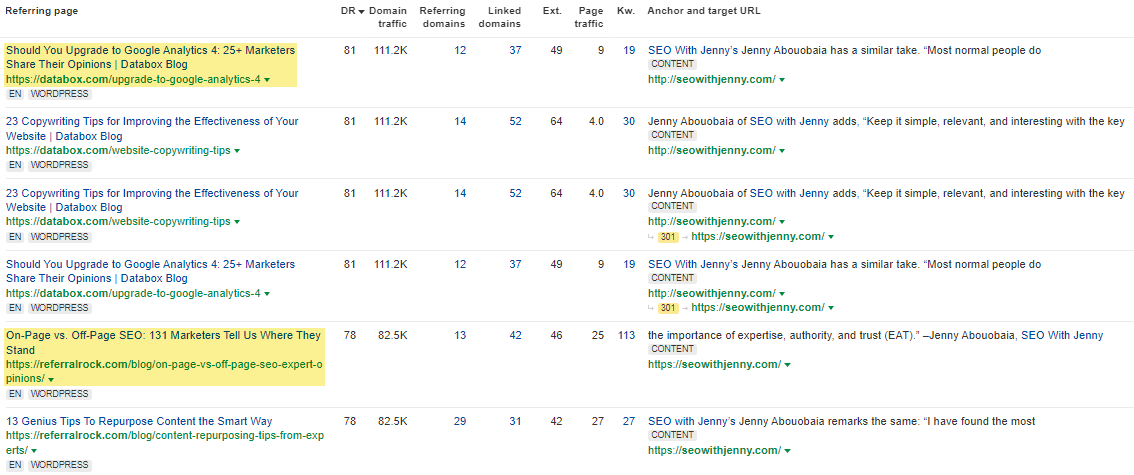
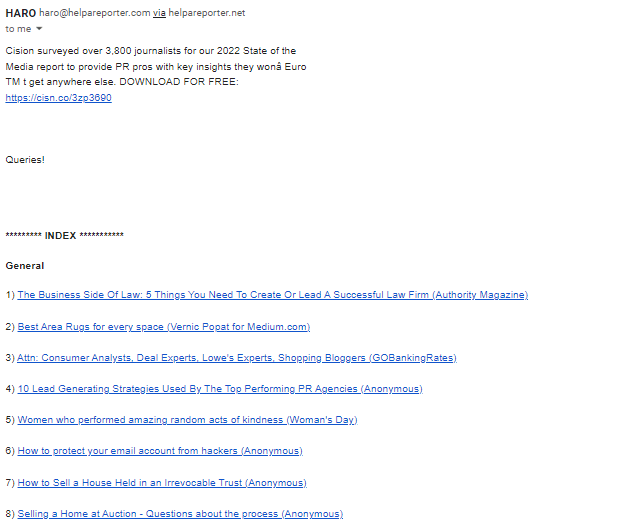
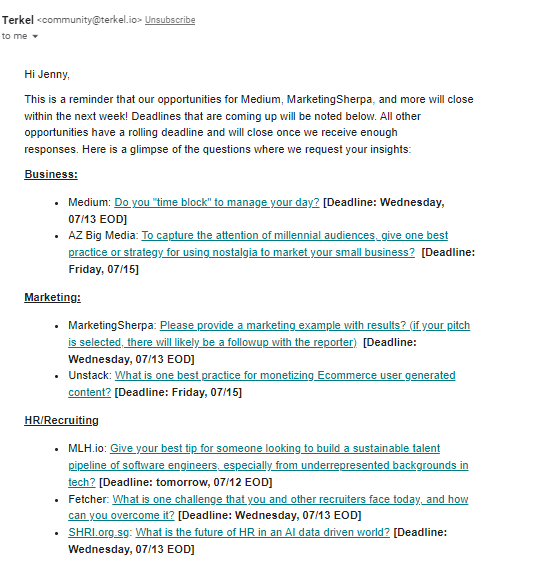 Email from Terkel with open opportunities.
Email from Terkel with open opportunities.Email from SourceBottle with open opportunities.
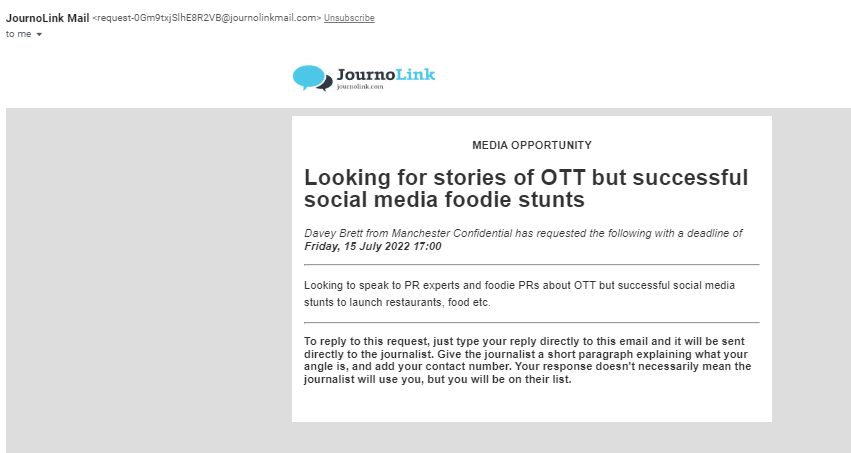 Email from JournoLink with new opportunities.
Email from JournoLink with new opportunities.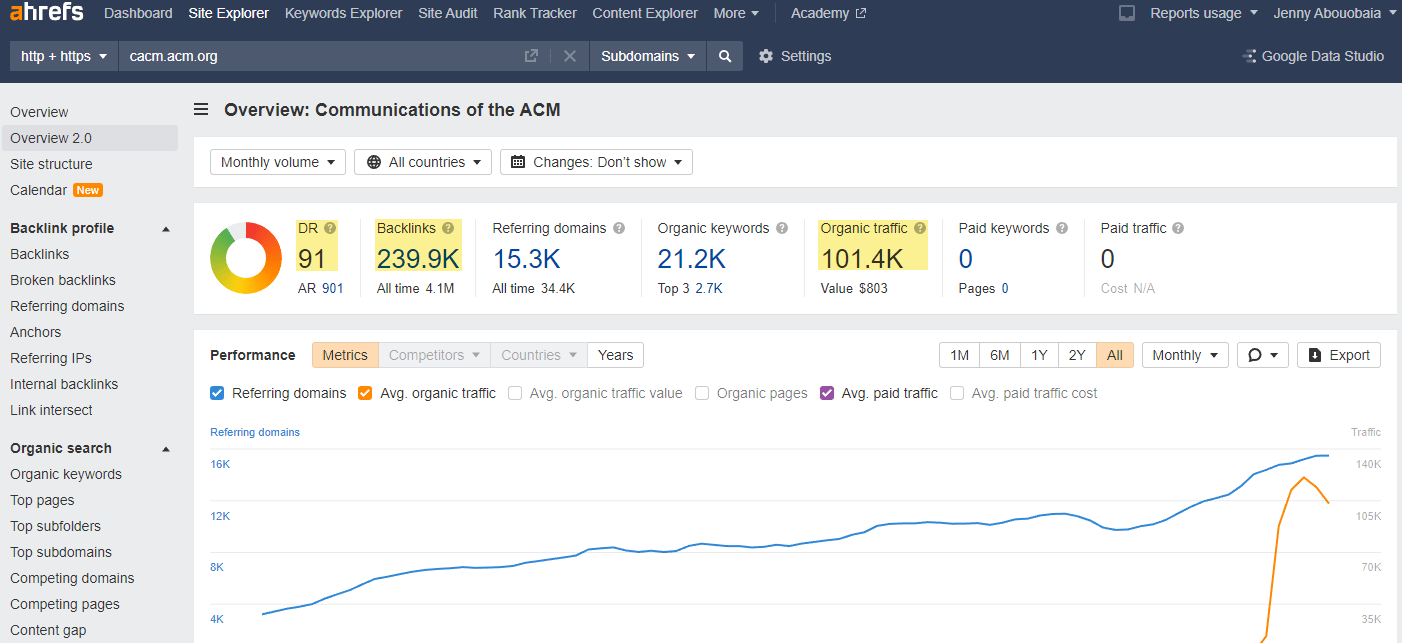
2. Data-driven proactive campaigns
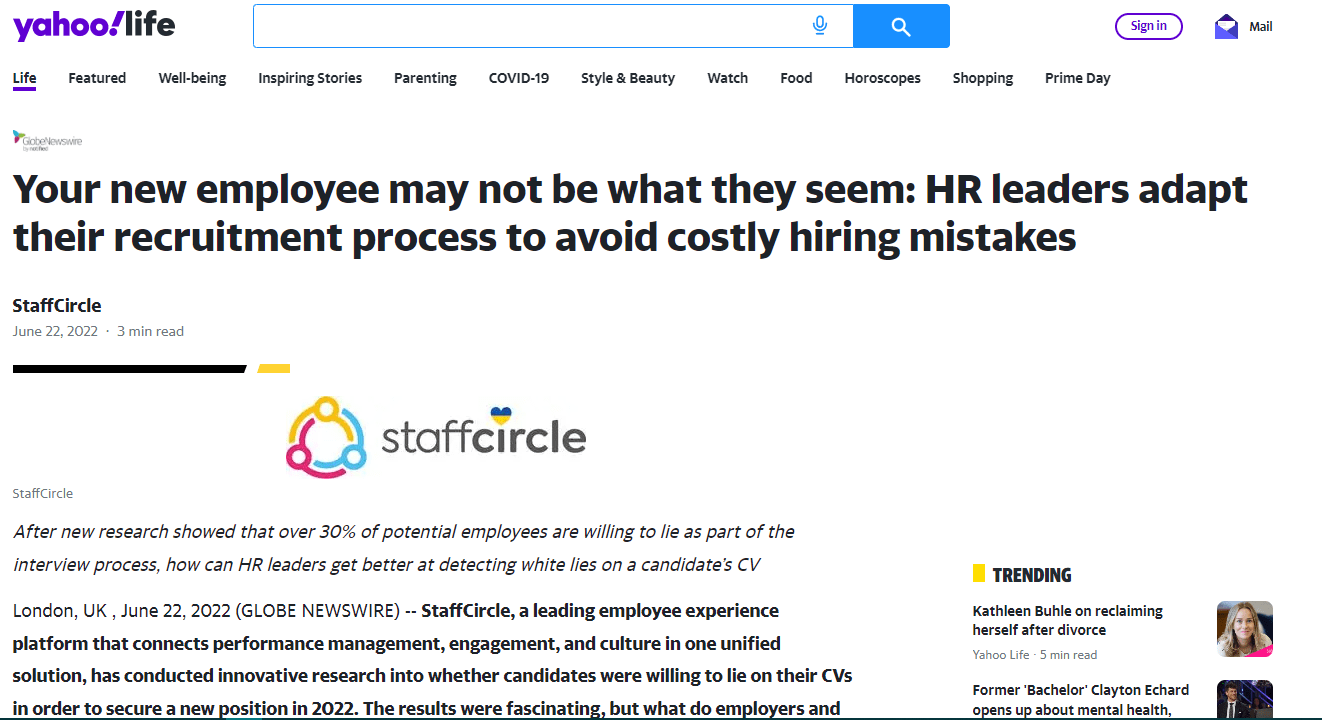 Campaign feature on Yahoo.
Campaign feature on Yahoo.3. Press releases

4. Creative campaigns
 Source: Rise at Seven.
Source: Rise at Seven.5. Newsjacking
Final thoughts

 Konoly
Konoly 









